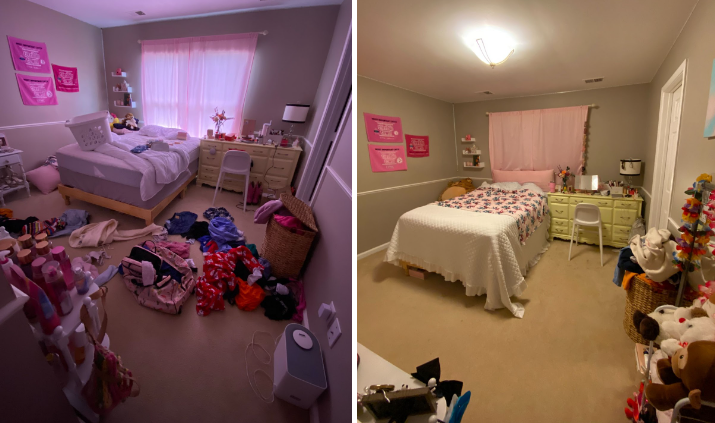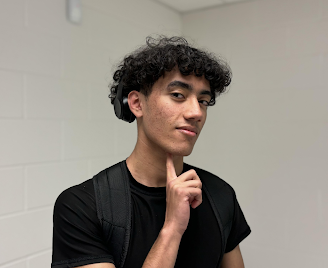New school, new rules
Photo courtesy of Helen Heaton
Prior to receiving a hall locker, sophomore Anna Pepper leaves an honor society meeting carrying her gym clothes.
November 12, 2018
A countywide crackdown on locker room policy has led WS to implement stricter rules. As of this year, no students are allowed in locker rooms without adult supervision, and cellphones and backpacks are banned (drawstring bags, however, are allowed).
FCPS decided to require stricter supervision guidelines after problems at other schools with students sneaking into locker rooms between classes. The specifics of the new rules, however, were determined by WS.
Each new rule has a purpose. Stricter supervision, as mentioned, is intended to ensure that students are behaving appropriately. Combined with the backpack ban, this measure is also designed to reduce theft. (The PE department believes it is safer for students to keep their backpacks in their hall lockers, which are in plain sight, than in PE lockers; they also banned backpacks to reduce crowding problems and issues with backpacks not fitting in lockers.) The cellphone ban, meanwhile, aims to prevent students from photographing or videotaping each other in the locker room.
The rules have already generated side effects. PE teachers, for example, now give their classes two extra minutes to change before class so they can put away their backpacks.
“They said that they’re going to give us two minutes to go to our locker, but I don’t think that’s very fair because some people have lockers all the way on the other side of the school,” said sophomore Anna Pepper. “And especially in the hallways when they’re super crowded, you can’t physically walk for two minutes to get to your locker and back.”
Sophomore Ellie Neal experienced this problem when her class dressed out for the first time this school year.
“I had to go to my locker, and then it hadn’t occurred to me yet that we couldn’t bring it [backpacks] in—I’d totally forgotten—so then I went back to my hall locker, and then I went back to the gym,” said Neal. “And then I didn’t have my passcode, so I had to go back to my hall locker. It was just a lot of back and forth and it took much longer than it should have.”
The PE department, however, is sensitive to the concerns of students.
“I don’t want them, [in] the first couple weeks of school, to be stressed out about our locker room policy either. The last thing I want as the health educator is to create more stress for these individuals,” said Jennifer Davies, department chair for Health and Physical Education.
In fact, it has also been an adjustment for the PE teachers to have to monitor the locker rooms more closely.
Yet PE students and teachers have not been the only ones affected. Especially at the beginning of the year, student athletes struggled to find places to put their sports gear during the school day with locker rooms off limits. They were also unable to change in locker rooms after school if there wasn’t an available adult. As the year progresses, however, students, staff, and coaches have begun to adapt. Recently, for example, the girls’ cross-country team—which spent several weeks changing in bathrooms—has begun using the locker room again now that patterns of supervision have been established.
Ultimately, the rules are here to stay, and Spartans have had to make the best of them.
“It’s a process for all of us. Like I said, we don’t love it either, to be honest, because we’re having to manage all that, and it’s not super easy to,” said Davies. “We kind of feel like we don’t want to be the bad guys either, but the rule is the rule, and it’s going to protect everybody.”







![According to the FCPS Restorative Justice Brochure, restorative justice comes with seven primary goals. Part of building the welcoming community comes through the class circle process. “It’s voluntary and everything that is said there is confidential,” said counselor Monica Hayes. “It’s the beginning of those [strong] relationships [in the community].”](https://theoracleonline.org/wp-content/uploads/2024/04/unnamed-28.png)







